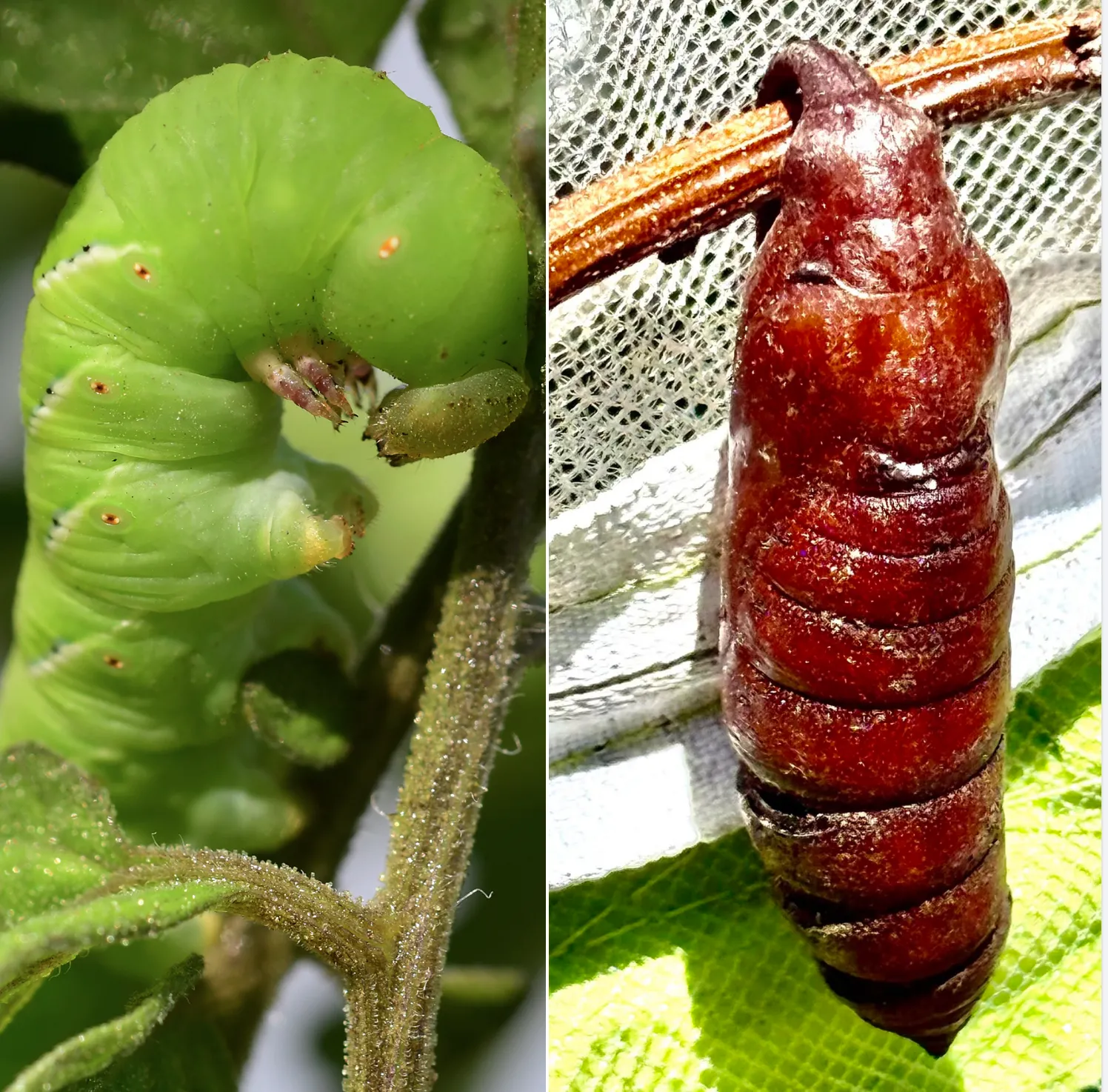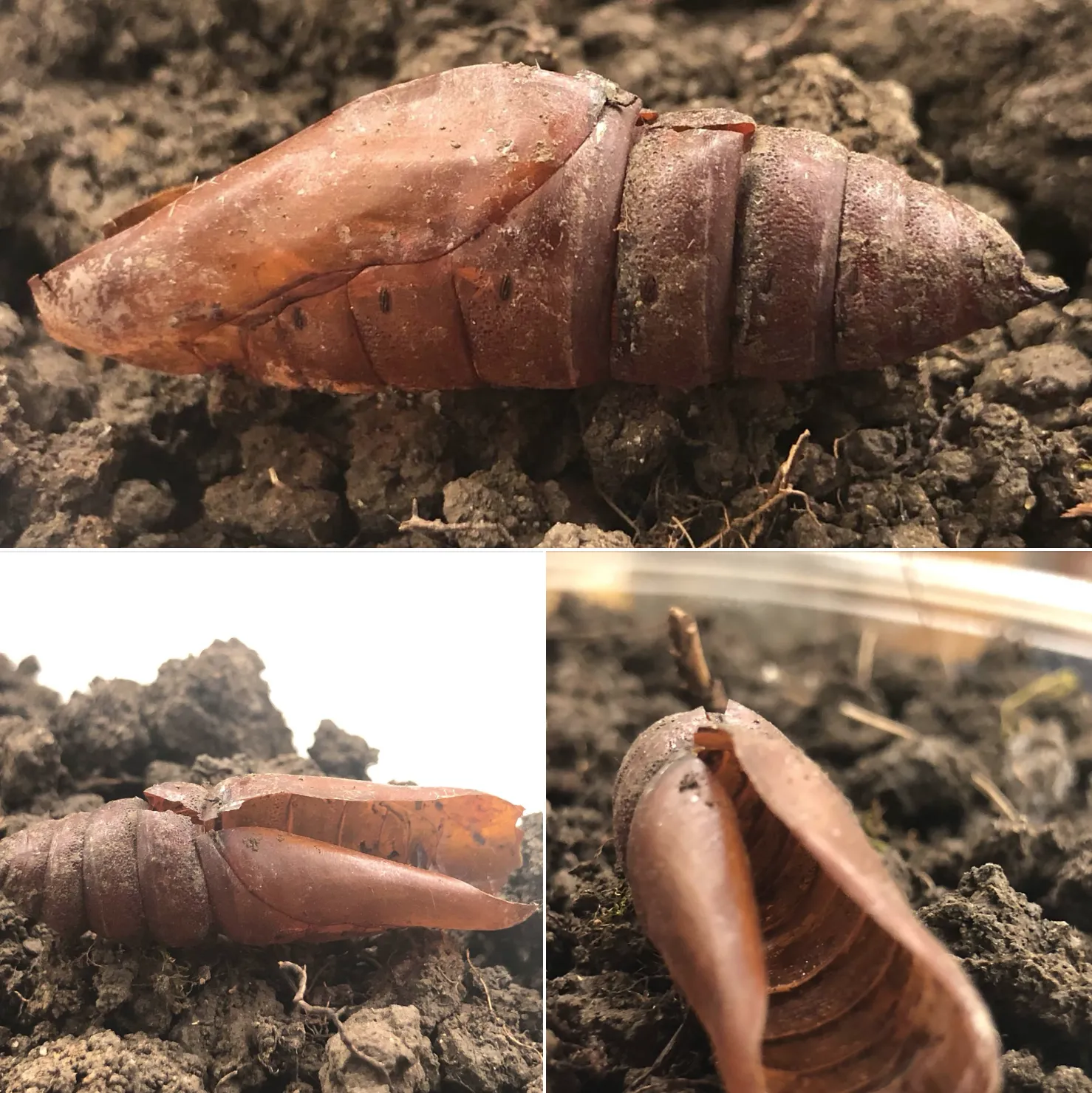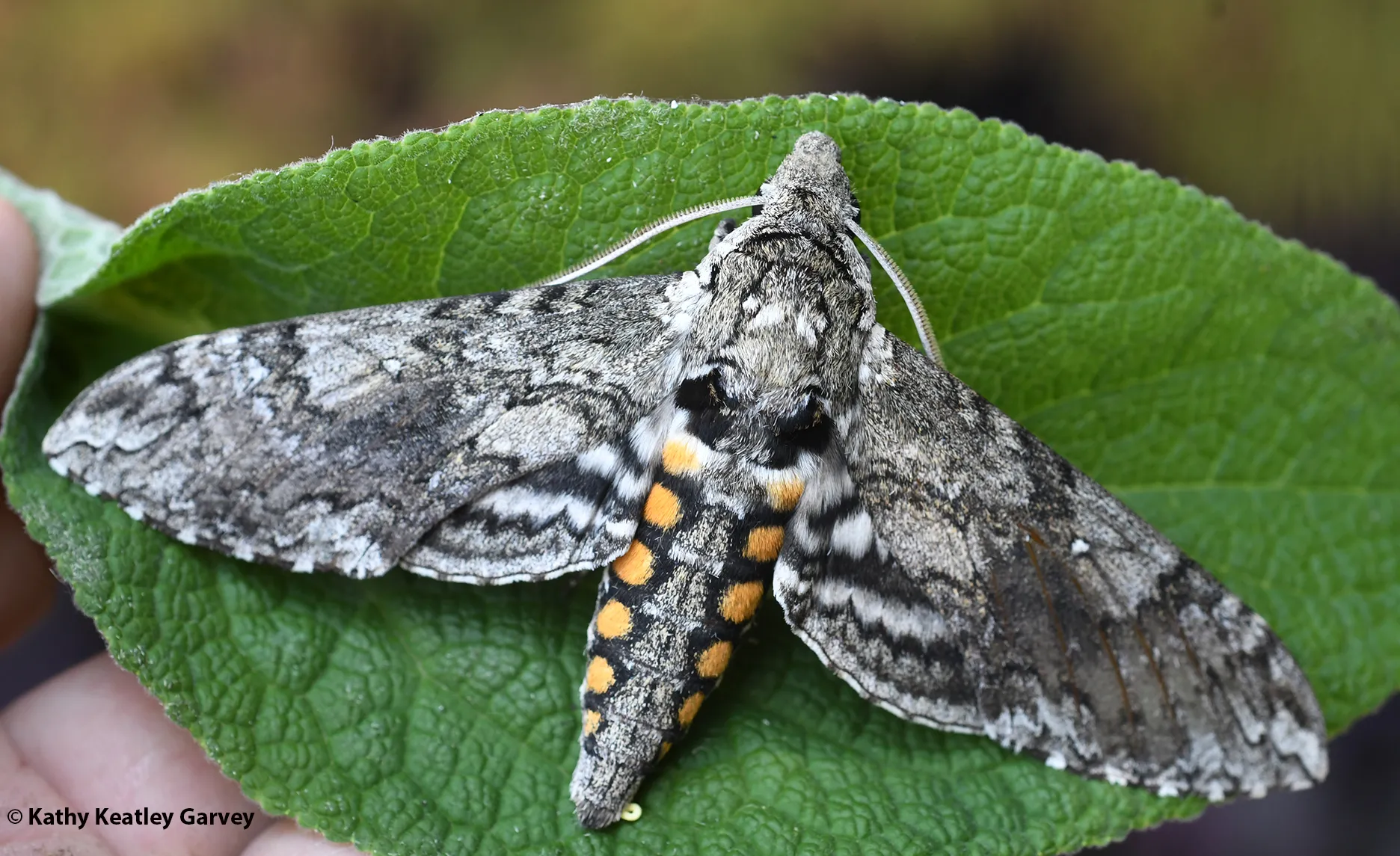
Ever held a tobacco hornworm?
You can when the Bohart Museum of Entomology at UC Davis hosts its annual "Moth Night" open house on Saturday, July 12. It takes place from 7 to 11 p.m. and it's free and family friendly, Parking is also free.
Bohart Museum scientists will be displaying, among other live critters, the tobacco hornworm, Manduca sexta. If you pick one off your tomato plants and you let it reach its adult stage, it will be a Carolina sphinx moth, also known as the tobacco hawk moth.
The sphinx moth draws nectar through its long tongue while hovering at flowers, noted Bohart research associate John "Moth Man" De Benedictus.
The larva is often mistaken for the tomato hornworm, Manduca quinquemaculata, he said. "Both larvae feed on tomatoes and other solanaceous plants including potatoes and tobacco--mostly on tomatoes in our area."
Tobacco hornworms can be distinguished by seven white diagonal lines with a black border. They also have red horns. Tomato hornworms have eight V-shaped white markings with no borders, and have dark blue or black horns.

"The caterpillars usually burrow into the ground to pupate, but they will pupate elsewhere if there is no soil in which to burrow," said De Benedictus "In such cases, the pupa is more likely to desiccate and perish."
Laurel Sexton of Fairfield took images of a tobacco hornworm pupa and shared several images with us. Looks huge, doesn't it? The larvae can grow up to 100 millimeters in length.
The origin of the name, the sphinx moth? "When the larva or caterpillar is disturbed, it rears up into an Egyptian sphinx-like pose," says Jeff Smith, curator of the Lepidoptera collection at the Bohart Museum.

Blacklighting Demonstration
The Bohart open house will feature a blacklighting demonstration; scientists will hang a white sheet and an ultraviolet (UV) light to attract moths and other night-flying insects.
In addition, the Bohart will spotlight its moth collection, crafts, microscopes, live animals, catching moth demonstrations, said Tabatha Yang, education and outreach coordinator.
Smith and Bohart associate Greg Kareofelas will answer questions about moths. "We plan to emphasize the amazing defenses moths and their caterpillars have to avoid their predators, such as bats, birds, and others that might eat them," Smith said, adding "We probably have around a half million moths in the Bohart collection."
Director of the Bohart Museum is Professor Jason Bond, the Evert and Marion Schlinger Endowed Chair of Insect Systematics, Department of Entomology and Nematology and the newly named executive associate dean of the UC Davis College of Agricultural and Environmental Sciences. He was promoted from associate dean to executive associate dean effective July 1.
For more information on the Bohart Museum, access the website at https://bohart.ucdavis.edu/ or contact bmuseum@ucdavis.edu.

